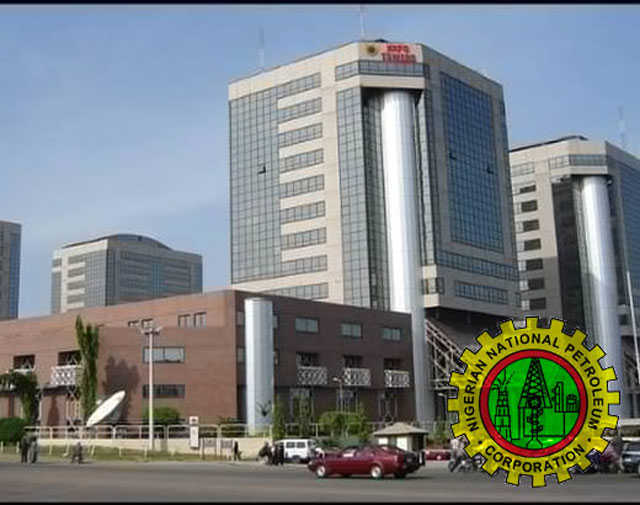Economy
The Big scam: Fresh doubts over NNPC’s 75 million per day consumption figures

By AYOOLA OLAOLUWA
Experts in the financial and petroleum sector as well as exhaustive data obtained by Business Hallmark have exposed the fuel subsidy regime as a huge scam.
The Nigerian National Petroleum Corporation (NNPC) had put the average daily consumption of petrol at 75 million litres per day.
Based on an average 75 daily consumption estimate, the Federal Executive Council (FEC) had in January 2022 approved the sum of N3 trillion for the new subsidy regime.
The N3 trillion fuel subsidy budget amounts to 17.5 per cent of the total 2022 budget of N17.126 trillion which has a deficit of N6.39 trillion (37% of the N17.126 trillion national budget).
Also, the N3 trillion subsidy budget is 55% and 43% of the capital component and recurrent expenditure of the 2022 budget, respectively.
Meanwhile, the NNPC had never provided any methodology on how it arrived at the fuel consumption rates it employs to determine the subsidy bill it usually presents to the Federal Government.
Also, all the regulatory agencies in the petroleum sections have never agreed on the actual petrol consumed in the country with each presenting contrasting figures.
For instance, in 2020, the now defunct Department of Petroleum Resources (DPR) put the fuel consumption figure consumed daily at 38 million litres daily, while the Ministry of Petroleum Resources presented a slightly higher figure of 52 million litres daily consumption.
Meanwhile, the conservative figures presented by the two are not close the that of the NNPC at over 70 million.
BH investigation indicates that that the NNPC’s figure is overstated as the country consumes nothing close to what the corporation had made Nigerians to believe.
Justifying the overbloated figure, the Group Managing Director (GMD), Mele Kyari, had during a presentation at an interactive session by the Joint Senate Committee on the 2022-2024 Medium Term Expenditure Framework and Fiscal Strategy Paper, among several reasons, blamed the high consumption figure on smuggling.
According to him, with a price difference of over N100 per litre between what is sold in Nigeria and in countries bordering the nation, it was difficult to cage the activities of petrol smugglers..
“We all know that our daily consumption is not up to 60 million litres. We all know that, and that is why we have to pull it down. We will pull it down by every means necessary.
“As long as there is arbitrage between the price that you sell and what is obtainable elsewhere, you can be sure that it is very difficult to contain the situation,” Kyari had explained.
Also, sources in NNPC put the percentage of petroleum products smuggled across the borders into neighbouring countries at between 40% to 50%.
Though, BH investigation revealed that a large quantity of Nigerian fuel is been smuggled across the borders to neighbouring countries, the figure mentioned by the NNPC is largely bloated and unrealistic.
For instance, the latest United Nations estimates of the population of the 16 West African nations of Benin, Burkina Faso, Cape Verde, The Gambia, Ghana, Guinea, Guinea-Bissau, Ivory Coast, Liberia, Mali, Mauritania,
Niger, Nigeria, Senegal, Sierra Leone, and Togo as well as Saint Helena, Ascension and Tristan da Cunha as of Friday, March 18, 2022, is 419,365,080, with Nigeria accounting for 215,222,606 which is more than half of the figure.
Some population experts who faulted NNPC’s fuel consumption figure of over 70 million litres unanimously agreed to go with the lesser figures presented by the Ministry of Petroleum Resources and the defunct DPR.
“If we take the average of 38 and 52 million figures presented by the DPR and the petroleum ministry, we will have about 40 million litres consumption rate.
“Let us now assume that Nigerians consume the DPR and petroleum ministry’s average of 40 million litres, leaving the over 30 million left to the remaining 15 West African countries, we can see that there is something fundamentally wrong with the NNPC figure.
“I said this because our fuel is not smuggled to all the 15 other countries in the region but only to Benin Republic, Cameroun, Niger Republic, Chad and probably Ghana.
“The population of the five countries is around 100 million. Assuming they rely 100% on Nigerian fuel, they should be consuming about a quarter of what we consume in Nigeria. That is another 20 million litters.
“If you add that to the 40 million average of DPR and the ministry of petroleum, we should have about 60 million litres. And this is for all the 6 countries. So how did NNPC arrived at its own figure of over 70 million?” demanded Dr. Rasheed Adegoke, a lecturer at the Department of Urban and Regional Planning, Osun State Polytecnic, Esa-Oke.
The United Nations put the estimated population of Benin Republic at 12.72 million,Togo 8.48 million persons, Niger Republic 24.96 million, Chad 17.32 million, Cameroun 27.2 million and Ghana 31,732,129 as of March 2022.
Based on the UN’s projections, the population of the 5 West African countries came to 122.34 million. Added to Nigeria’s 215million people, the figure rises to 337.58 million.
“Can you now see my argument? If the whole population of West African people estimated at 419,365,080 consume about 60 million litres, how can just six countries of just 337.58 million consume over 70 million litres”, Dr. Adegoke elaborated.
A data released by the now defunct Department of Petroleum Resources, though unintentionally, picked holes in NNPC’s high fuel consumption figure.
A critical review of the data suggest that Nigerian fuel marketers load more petrol than their current distribution capacity.
For instance, A.A RANO Nigeria Limited with less than 100 filling stations nationwide lifted 115.4 million litres of petrol in June 2021, while A.Y.M Shafa Limited, a petroleum firm with less than 100 filling stations lifted 89.2 million litres of petrol in the same period.
Similarly, Matrix Energy which has less than 60 filling stations, lifted as high as 123.6 million litres of petrol in June 2021.
In contrast, Total Nigeria Plc, a multinational oil company with an extensive distribution network of over 570 service stations nationwide, lifted 24.3 million litres of petrol in the same period under review.
The data practicality confirms the fact that the nations lacks the distribution network to handle over 70 million litres pf petrol daily, practically tearing to pieces NNPC’s consumption figure.
Another revealing aspect of the data is the revelation that 18 states consume same amount of petrol as Lagos, the most industrialised and populated state in the country.
According to the data, while Lagos, with all the homes, small and medium scale enterprises that rely heavily on petrol powered generators for electricity, as well as the notorious traffick logjams on its ever busy roads which made vehicles consume more fuel consumed 430 million litres in June 2021, 16 states, including economically backward states of Yobe Bauchi and Jigawa also consumed a combined total of 397.3 million litres per in the same June.
According to JCDecaux Grace Lake Nigeria, the biggest outdoor advertising firm in the world, the over 5 million private vehicles and 200,000 commercial vehicles in Lagos State get stuck in the same spot for an average of 4.2 hours every day and 30 hours every week owing to population explosion and under-utilised waterways which ensure that the state roads are always locked up in traffick.
The advertising firm further explained that on the average, Lagos records 227 vehicles per kilometre of road daily, more than the national average of about 11.
The Nigerian Bureau of Statistics (NBS) put the number of registered vehicles in the whole country at of the 4th quarter of 2018 at 11.8 million, with Lagos accounting for about half of the figure.
“So, it is practically impossible for other states with less population, businesses and vehicles to be competing with Lagos in the area of fuel consumption.
“What this means is that the figure bandied by the NNPC is largely false”.
A state-by-state comparison pointed to the farce called petrol subsidy. For instance, Zamfara, a banditry ravaged state, consumed 77.2 million litres, while a more industrialised Anambra consumed an average of 68.8 million litres in the same month of June.
Likewise, while Adamawa State consumed 68.8 million litres of petrol for the month of June, a more commercially vibrant state, Ondo, only consumed 59.6 million litres same period.
In the area of petrol tankers deliveries to states, the industry report shows that the number of petrol trucks that delivered fuel to border states are higher than states with higher IGR.
For instance, in the month under review, Adamawa State received 1,501 petrol trucks while Abia State, which host international markets like the Aba and Ariara Markets, received only 1,026 trucks.
Another state in the savannah with virtually no economic activities, Zamfara, received 1,699 petrol trucks while a much-industrialised Anambra recorded 1,218 trucks.
“Nigeria’s subsidy regime is quiet murky. It is one of the world’s biggest national frauds – the billions that are being siphoned out by unscrupulous traders and officials abusing the fuel subsidy system.
“The full, shocking scale of the fraud is only just emerging into the daylight and it reveals outrageous scams that are bleeding the Nigerian people dry”, said John Beattie, a writer with African Business, a medium that focuses on industry reports and market intelligence on Africa.









